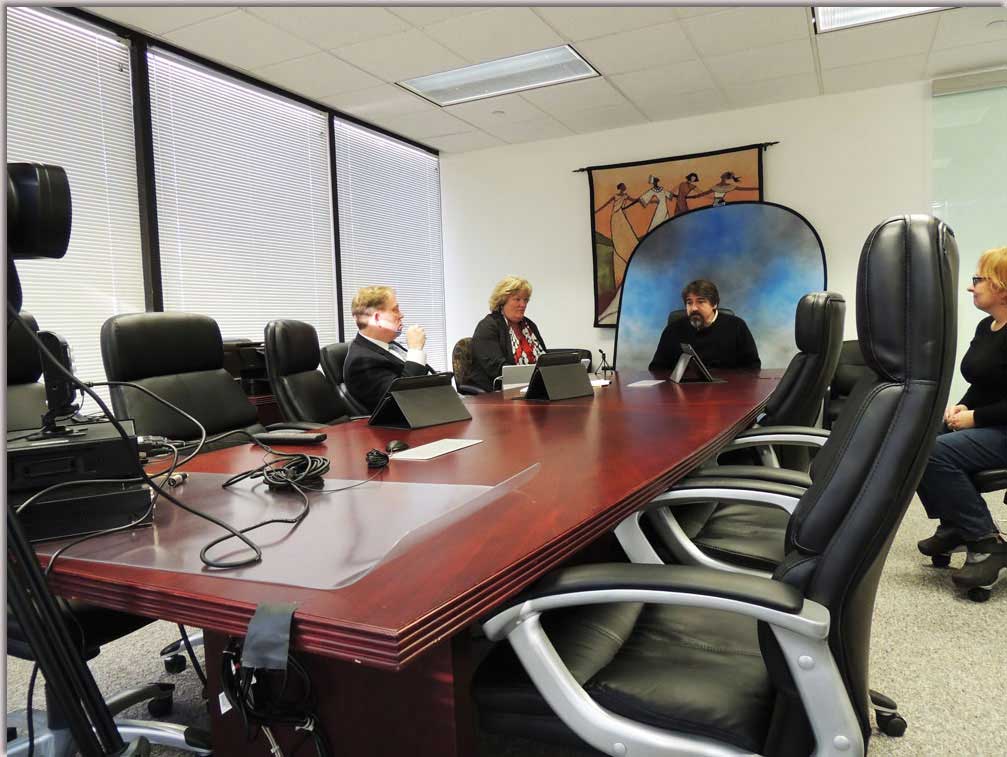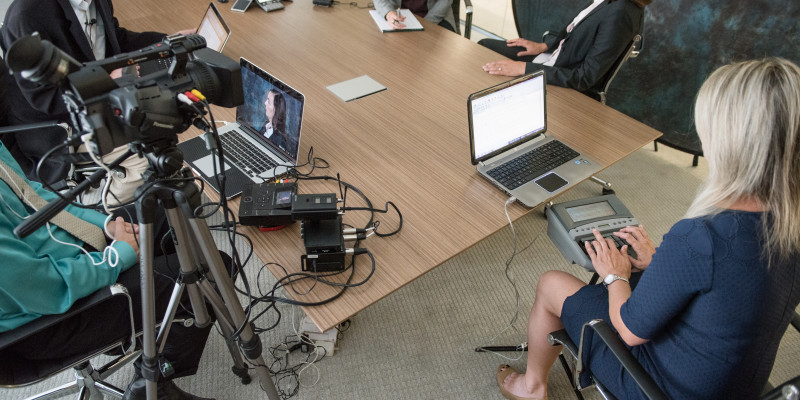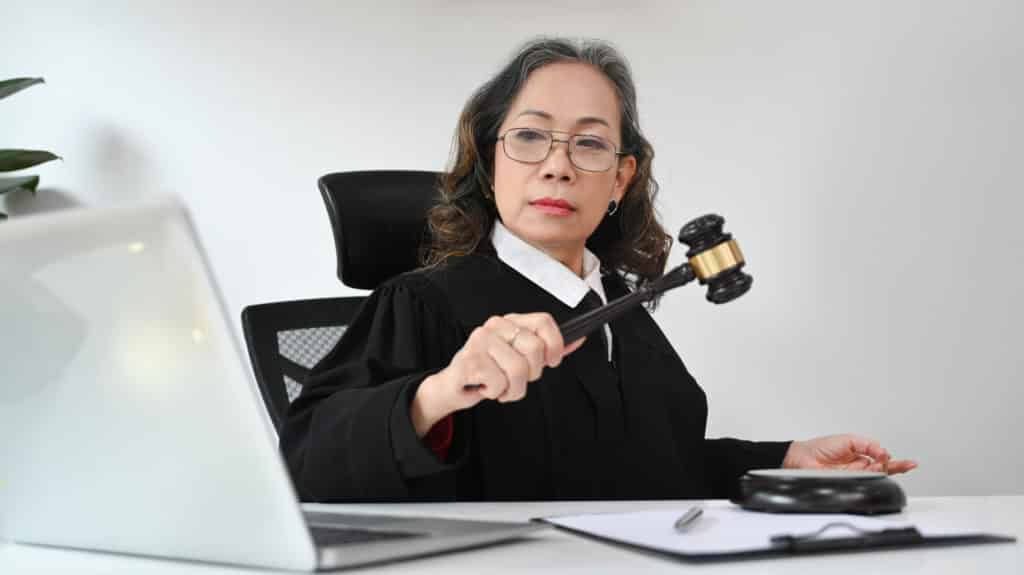Trick Aspects to Consider When Working With Legal Videography Professionals
Exploring the Systems of Lawful Videography: Unveiling Its Operation in Safeguarding Authentic Aesthetic Testament for Judicial Process
In the world of judicial procedures, the function of legal videography stands as a cornerstone in preserving and offering aesthetic evidence. As modern technology remains to breakthrough, the devices behind legal videography have become increasingly detailed, supplying an essential layer of authenticity to testaments recorded on video clip. By delving into the operational details of lawful videography, one can reveal the thorough processes that secure the integrity of aesthetic evidence provided in court rooms - Legal Videography. This expedition not just clarifies the historic advancement of legal videography yet additionally means the future patterns that may better revolutionize exactly how visual testaments are supported in the world of justice.
Historical Development of Lawful Videography
Taking a look at the historic progression of lawful videography reveals a considerable change in the recording and presentation of visual evidence within the lawful landscape. In the past, legal proceedings greatly counted on written records and photographs to record occasions and supply proof. With the advent of video clip modern technology, the legal sector observed a paradigm change in exactly how aesthetic statement was recorded and offered.
The evolution of lawful videography can be traced back to the late 20th century when improvements in video clip recording tools made it a lot more available for use in courts. This technological improvement not only improved the accuracy and dependability of visual proof yet also transformed the way cases were offered to courts and courts (Legal Videography). Lawyers began to recognize the influential power of video clip recordings in sharing emotions, nuances, and non-verbal signs that created pictures or records alone might not capture effectively

Innovation Developments in Video Documentation
What essential technological developments have transformed video documents in the lawful area? The legal field has seen significant improvements in video clip paperwork technology that have improved the authenticity and reliability of visual proof in judicial procedures. One of the key advancements is high-definition (HD) video recording capabilities, which provide crystal-clear photos and sharp information that are vital for precisely capturing testaments, faces, and various other aesthetic signs. Furthermore, the integration of timestamping and metadata attributes in video documentation devices has actually enabled accurate documentation of when and where the video was videotaped, making sure the stability of the proof provided in court.
Furthermore, innovations in video clip encryption and watermarking innovations have actually boosted the safety and tamper-proof nature of video clip evidence, securing it versus unapproved alterations or tampering. In addition, the introduction of cloud storage services and remote accessibility capabilities has streamlined the storage, retrieval, and sharing of video clip evidence, assisting in smooth collaboration amongst lawyers and making sure reliable access to critical visual statements when required. These technological advancements in video documentation have undoubtedly transformed the legal field, improving the accuracy, credibility, and admissibility of visual evidence in judicial process.
Duty of Lawful Videographers in Courtroom Settings
The advancement of video clip documents modern technology in the lawful field has actually necessitated an important role for lawful videographers in court settings, ensuring the integrity and integrity of aesthetic testimonies offered during judicial process. Legal videographers play a basic function in recording and preserving precise visual proof that can be crucial in lawsuit. Their duty encompasses establishing devices, tape-recording proceedings, and generating top notch videos that properly show the events in the court.
In addition, lawful videographers frequently work carefully with lawful groups to make certain that the video clip evidence aligns with the case's demands Learn More and can be successfully offered in court to sustain the lawful debates being made. On the whole, the role of legal videographers in courtroom settings is essential in supporting the principles of justice and making sure the transparency of legal proceedings. Legal Videography.

Ensuring Admissibility and Stability of Video Clip Evidence
To preserve the credibility of visual proof offered in legal procedures, making certain the admissibility and integrity of video proof is this hyperlink an essential responsibility for legal videographers. Admissibility describes the approval of proof by the court, and for video clip evidence to be admissible, it needs to fulfill particular criteria. Legal videographers play a vital duty in ensuring that the videos they capture follow the policies of proof, such as significance, integrity, and authenticity.
Honesty of video clip proof involves preserving the originality and accuracy of the footage from the time it is recorded until it exists in court. This includes firmly saving the video clip data, documenting the chain of protection, and protecting against any kind of meddling or modifications. Legal videographers should follow strict methods to assure the stability of the video evidence and protect against any type of challenges to its credibility.
Future Trends in Legal Videography
Offered the boosting reliance on technology in lawful procedures, legal videographers are positioned to accept innovative advancements forming the future of visual testimony capture and discussion. One of the prominent fads coming up is the integration of digital truth (VR) and boosted truth (AR) technologies right into legal videography. These modern technologies have the prospective to revolutionize just how visual proof is provided in courtrooms, permitting judges and courts to submerse themselves in the scene of the criminal offense or event.
In addition, making use of synthetic knowledge (AI) formulas for video clip analysis is anticipated to improve the process of assessing and evaluating huge amounts of video clip footage. AI can aid in determining essential moments, abnormalities, and patterns within video clips, boosting the effectiveness of legal examinations.

Conclusion
Finally, lawful videography has played a crucial role in giving authentic aesthetic evidence for judicial procedures. Via technical developments and the proficiency of legal videographers, the stability and admissibility of video evidence are made certain in court setups. As legal videography proceeds to evolve, it will certainly be necessary to promote standards that preserve the precision and reliability of aesthetic testament for the future of legal procedures.
Examining the historical development of lawful videography reveals a considerable makeover in the capturing and discussion of aesthetic proof within the legal landscape.The development of video clip documents technology in the legal field has required a critical role for legal videographers in courtroom setups, guaranteeing the stability and integrity of aesthetic testimonies presented during judicial procedures. Furthermore, Extra resources lawful videographers usually function closely with legal teams to guarantee that the video evidence lines up with the situation's demands and can be properly offered in court to sustain the lawful debates being made.To keep the reliability of visual evidence presented in legal process, ensuring the admissibility and integrity of video clip proof is a crucial responsibility for lawful videographers. As legal videography continues to evolve, it will be vital to support requirements that preserve the accuracy and reliability of aesthetic testament for the future of lawful process.